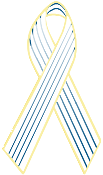Knitting and the Rabbinate
From JTSA Distance Learning:
P A R A S H A C O M M E N T A R Y
Parashat Vayakhel 5765
Chancellor Ismar Schorsch
Exodus 35:1 - 38:20
March 5, 2005 24 Adar I 5765
Read the Parashah | Read the Haftarah
Last week when our seven-year old granddaughter arrived, she announced proudly that she was learning to knit. I commented, "What a lovely hobby!" She declared, "My first!" I asked where she was learning. She said in an after school club once a week. Presently, she was knitting a potholder. I probed further. "How many in the club?" "Twelve," she said. Whereupon, I played sociologist: "How many boys?" She fired back, "Three," and with a twinkle in her eye, she exclaimed, "And they are very good!" God bless Rosie Greer!
Tamar Ross, in her brilliant new book Expanding the Palace of Torah: Orthodoxy and Feminism, cites the most famous woman anthropologist of the last century, Margaret Mead, to the effect that "there are cultures in which men weave and women fish, and cultures in which women weave and men fish. But in either case, the work that women perform is valued less" (7). Spinning is a conspicuous part of this week's parashah and it is definitely a craft associated with women, though not yet devalued. How it does get devalued is what I would like to explore.
For the construction of the Tabernacle, God has Moses seek voluntary contributions of precious metals and vital artifacts from the people. No national levy, only free-will offerings. Coercion is to be rigorously avoided. All, men and women alike, are invited to express their approval of the project by sharing of their personal possessions. The inclusion of women in this campaign is so striking that when Maimonides came to codify the laws pertaining to the building of the Temple, he stressed in the spirit of our parashah that "all men and women are obligated to build and assist physically and monetarily, just like in the Tabernacle in the wilderness" (Hilkhot Beit ha-Behirah 1:12). While both men and women, moved by the moment, brought "brooches, earrings, rings and pendants — gold objects of all kinds" as well as "crimson yarns, fine linens, goats' hair, tanned ram skins and dolphin skins" (Exodus 35:22–23), the Torah does attribute the profusion of woven materials to women: "And all the skilled women spun with their own hands, and brought what they had spun, in blue, purple, and crimson yarns, and in fine linen. And all the women who excelled in that skill spun the goats' hair" (35:25–26).
In brief, the building of the Tabernacle is a fully egalitarian enterprise. Each gender volunteers what it is most adept at making. There is no trace of a stigma attached to the craft of weaving. On the contrary, since most of the Tabernacle consisted of cloth, women contributed more than their fair share.
And yet this passage became the locus classicus for the rabbinic denigration "that the wisdom of women is restricted to the spindle," though Rashi, to his credit, makes no reference to it in his commentary (BT Yoma 66b). The egregious nature of this misreading behooves us to take a look at its talmudic source, a story rife with its own problems. It revolves around the rabbinic sage Rabbi Eliezer ben Hyrcanus, the most outstanding of the students of Rabbi Yohanan ben Zakkai and the teacher of Rabbi Akiva. Living in the dark days after the destruction of the Temple by the Romans in 70 CE, Rabbi Eliezer strove to salvage the halakhic teachings of earlier sages. Rabbi Yohanan described him as "a plastered well what never loses a drop" ( PirkeiAvot 2:11). As such, he was authoritarian, uncompromising, and insufferable.
In the story in question, the Talmud portrays Rabbi Eliezer responding to a series of cryptic queries by his students that he dismisses as inconsequential and unworthy of answering. Each of his formulaic responses rings with impatience and high-handedness. It was not one of his better days. The Talmud tries to exonerate his behavior by claiming that Rabbi Eliezer sent the students away because he never said anything that he had not heard from his teacher (implying that their questions were beyond his ken).
The final question that day came from "a wise woman" who asked him about the worshipers of the golden calf: "If they were equally guilty why did they not all suffer the same punishment [whereas some had died from ingesting the ashes of the calf, some at the hands of the Levites and some from a plague (32:20–35)]?" Instead of considering her question, Eliezer attacked her intelligence: "The wisdom of women is restricted to the spindle, which is why the Torah says: 'And all skilled women [hokhmat lev] spun with their own hands'" (35:25). This time, the Talmud offers no excuses for Rabbi Eliezer; it simply tries to answer the question. Implicit in that move is a rebuke of Rabbi Eliezer for his unwarranted contempt. Born of malice, his interpretive spin does grave violence to the biblical text.
The fact is that a woman was to be found among Rabbi Eliezer's students. Were there others? The quality of her question not only vindicated her intelligence, but mocked the putdown. She knew the Torah intimately (witness her question's detail) and thought about it deeply. Rabbi Eliezer obviously felt that women belonged at home.
But how did his animus become normative, leading to a systemic exclusion of women from the corridors of power in Judaism? In a book-based religion, education was the key to religious leadership. To its credit, the Mishnah preserved an alternate view. A generation after Rabbi Eliezer, Ben Azzai, whose devotion to Torah kept him from ever marrying, roundly affirmed the principle that a father was required to teach his daughter Torah. The Mishnah, however, followed that endorsement with yet another charged rejection by Rabbi Eliezer. Not only is there no requirement, but also a father who does so exposes his daughter to great harm (Sotah 3:4). Still, a clear choice existed. That the view of Rabbi Eliezer eventually prevailed suggests a strong cultural bias in its favor.
The long-term result was not ignorance but illiteracy. In one of his charming snapshots of Jewish immigrant life on the pampa at the beginning of the twentieth century, the Argentine Jewish writer Alberto Gerchunoff depicts the women waiting for services to start on the eve of the fast day of Tishah b'Av.
"Mother, can't we start the service now?"
"No, it's still too early. We have to wait for the slaughterer's wife and her sister, and for the midwife."
"For the midwife? You don't say!" one of the old ladies exclaimed. "Why, she doesn't even know how to read the prayers. You have to say the words out loud for her, and then she repeats them."
"And to hear her wailing, you'd think she wrote them herself!"
"Many of the women are like that," Moises's wife responded. "They can't make out a single letter in the Machzor, but they can feel what the words mean."
(Edna Eizenberg, Parricide on the Pampa?, 74)The extension of equal education to Jewish girls is one of the great revolutions to have swept the Orthodox world in the twentieth century. In the last three decades, this silent revolution culminated in the admission of women to the study of Talmud, a field long deemed beyond their intellectual ability. While in the nineteenth century, the learned Rayna Batya — the first wife of R. Naftali Tsevi Yehuda Berlin, the head of the Volozhin Yeshiva — had to acquire her rare mastery of Talmud and rabbinic literature on her own in utter isolation, today both Israel and America offer young women ample opportunities for advanced Torah study. The misogyny of Rabbi Eliezer has at last been overcome, and with that triumph it is but a matter of time till Orthodox women will begin to exercise rabbinic authority. They have already defined discrete areas of expertise in Israel, such as laws pertaining to divorce and family purity, where they vie with their male counterparts for authority. Others will come, because in Judaism, knowledge is the gateway to the exercise of religious leadership.
Fortunately for my granddaughter, she is a second grader at a Solomon Schechter day school. This year, the Conservative Movement celebrates the twentieth anniversary of the ordination of its first woman rabbi by The Jewish Theological Seminary in May 1985. Knitting and rabbinating are no longer gender specific. She is free to do both equally well to the benefit of Judaism and her own inner life.
Shabbat shalom,
The publication and distribution of Dr. Schorsch's commentary on Parashat Vayakhel are made possible by a generous grant from Rita Dee and Harold (z"l) Hassenfeld.
Copyright © 2005 Jewish Theological Seminary
Comments to learn@jts web team.














2 comments:
Are you born blue? I am looking for somebody who wants with that twinkle in there eye just like me the eye of the lotus flower. I am from and also live in Boulder Colorado yaho yaho yaho yeppi! And my name is dylan patrick ackermann My initials are D.P. ACKERMANN right now I am getting my education in college at fort lewis durango. I got my own studio on 23erd and main. I like being around a group of close friends and hanging out how about you. I like drinking beer and wine. I write peotry. My favorite type of music si bob marleyand bob Dylan yaho yippi . I in fact was nammed after bob dylan. I would like to first get a good e-mail friend after that anything goes. Someday I'd like to fall in love. When I do I WANT some one who can truly WANT to love me. My nickname is dilldogg13 yaho dilldogg13@yahoo.com isn’t that a really wanna know?
Are you born blue? I am looking for somebody who wants with that twinkle in there eye just like me the eye of the lotus flower. I am from and also live in Boulder Colorado yaho yaho yaho yeppi! And my name is dylan patrick ackermann My initials are D.P. ACKERMANN right now I am getting my education in college at fort lewis durango. I got my own studio on 23erd and main. I like being around a group of close friends and hanging out how about you. I like drinking beer and wine. I write peotry. My favorite type of music si bob marleyand bob Dylan yaho yippi . I in fact was nammed after bob dylan. I would like to first get a good e-mail friend after that anything goes. Someday I'd like to fall in love. When I do I WANT some one who can truly WANT to love me. My nickname is dilldogg13 yaho dilldogg13@yahoo.com isn’t that a really wanna know?
Post a Comment